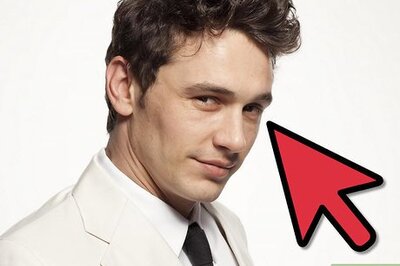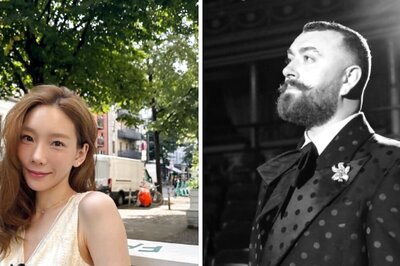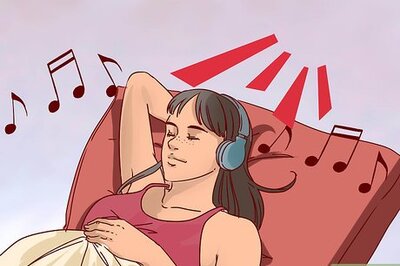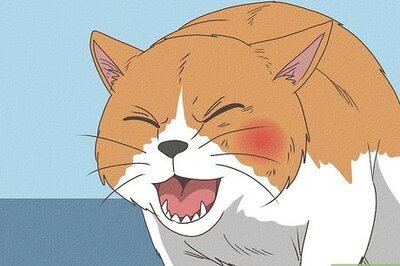
views
Fantasy Book Tropes
The Chosen One The Chosen One trope features a protagonist who’s “better” than everyone else. This doesn’t mean that the protagonist is arrogant or stuck-up; rather, they have an elevated gift or advantage compared to the other characters. Typically, this comes as a surprise to the character and generally sets them up for a destiny of greatness. Examples: The Lightning Thief by Rick Riordan, The Cruel Prince by Holly Black
The Quest The Quest trope is all about the journey. With this trope, characters travel for an extended amount of time to reach a specific destination. They’ll likely face their fears and dangers on the journey. In the end, they’ll discover that it’s the journey that really matters. Examples: Fool’s Quest by Robin Hobb, Swordheart by T. Kingfisher
The Supernatural Romance The Supernatural Romance trope is exactly as it sounds. This trope is popular in “romantasy” or romance-fantasy novels. The leading character (typically human) falls in love with a supernatural entity, whether that’s a vampire, werewolf, ghost, or fae. Examples: City of Bones by Cassandra Clare, Hush, Hush by Becca Fitzpatrick
The Supernatural Love Triangle The Supernatural Love Triangle trope puts an extra spin on the Supernatural Romance trope. With this trope, there are two supernatural lovers pining for the protagonist’s favor. The protagonist generally has to choose one of the supernaturals to love. Examples: Fallen by Lauren Kate, The Host by Stephenie Meyer
The MacGuffin A “MacGuffin” is a literary term that refers to a physical plot device that motivates and propels the main characters. The MacGuffin trope leans heavily on this literary device to further the plot and engage readers. The “MacGuffin” of a story could be anything: a secret letter, a book, a key—you name it! Examples: The Lord of the Rings by J.R.R. Tolkien, The Dark Tower by Stephen King
The Mentor The Mentor is an archetypal trope that leans heavily on a wise, older role model to the main character. The mentor figure teaches the protagonist valuable lessons and often provides backstory and foreshadowing. Without the mentor, the main character may not be able to reach their full potential. Examples: Albus Dumbledore from Harry Potter, Gandalf the Grey from The Lord of the Rings
The Reluctant Ruler The Reluctant Ruler is an archetypal trope featuring a young ruler who doesn’t want power. The young ruler is typically the main character or a prevalent supporting character. Their decisions and actions are fueled by the fact that they don’t want to rule a kingdom. Examples: Jon Snow in Game of Thrones, Frodo Baggins in The Lord of the Rings
The Secret Society This trope features an underground group that’s either good or evil. The plans and doings of this secret society can dramatically alter the plot while exploring themes of segregation, identity, and classism. Examples: Dumbledore’s Army in Harry Potter, The Man in Black in The Dark Tower by Stephen King
The Hidden World The Hidden World trope features a forgotten or hidden secondary world. The main characters likely uncover this world and embark to explore its politics, magic, and belief systems. Examples: Percy Jackson series by Rick Riordan, Harry Potter series by J.K. Rowling
Inconvenient Prophecies An inconvenient prophecy trope relies on a miscommunication of fate. The prophecy propels the plot and motivates the main character, but it’s also usually extremely vague, misleading, or troublesome. Examples: Mistborn by Brandon Sanderson, She Who Became the Sun by Alka Joshi
Ye Olde Taverne The Ye Olde Taverne trope is a classic amongst high fantasy novels. This trope brings the leading characters to a tavern, where an idealized medieval setting becomes the forefront. Characters drink, dance, and make magical trades within the shadows of the cheerful or mysterious tavern walls. Examples: Innkeeper’s Song by Peter S. Beagle, Legends and Lattes by Travis Baldree
The Ultimate Evil The Ultimate Evil trope is based on the idea that there’s an overall ultimate evil encompassing a world. Characters work toward defeating this ultimate evil force or presence to save the world. Examples: Sauron from The Lord of the Rings, Lord Voldemort from Harry Potter
Romance Book Tropes
Enemies to Lovers One of the most popular romance tropes, Enemies to Lovers is all about hate turning into love. The leading characters think they hate each other, but in reality, they’re head-over-heels. Readers follow along as the characters come to realize their true feelings. Examples: Book Lovers by Emily Henry, Red, White & Royal Blue by Casey McQuiston
Friends to Lovers The Friends to Lovers trope is a classic in the romance drama. The leading characters have always been friends; that is, until something flips a switch and suddenly they’re madly in love. Readers are along for the ride as a platonic relationship turns romantic. Examples: People We Meet on Vacation by Emily Henry, Tears of the Moon by Nora Roberts
The Fake Relationship The Fake Relationship trope revolves around a ruse that two characters are dating when they’re not. This trope is often paired with Enemies to Lovers or as the basis of a deal between the characters. Each character gets something out of the fake relationship, and they never expected they’d actually fall in love. Examples: The Love Hypothesis by Ali Hazelwood, The Unhoneymooners by Christina Lauren
The Meet-Cute The Meet-Cute trope propels the love story of the leading characters. With this trope, the main character and love interest initially cross paths in a cute way. Maybe they meet when their dogs become friends at the park, or perhaps one stumbles into the other while grabbing coffee. Examples: What If It’s Us by Adam Silvera and Becky Albertalli, Kiss Her Once for Me by Alison Cochrun
The Meet-Cringe Similar to the Meet-Cute, the Meet-Cringe trope is the start of a romance, except it begins on awkward or mortifying terms. In other words, it’s the part of the story the pair’s future kids will never know about. Maybe one walks into the other while they’re in the restroom, or they lock eyes after falling head-first. Examples: The Hating Game by Sally Thorne, Icebreaker by Hannah Grace
Love at First Sight Love at First Sight is a classic romance trope that’s exactly what it sounds like. The lovers lock eyes and immediately know they’re the one—they’re destined to be together! Writers have even put a modern twist on this trope by only having one character fall in love right away. Examples: One Day in December by Josie Silver, It Ends with Us by Colleen Hoover
Love Triangle A tried and true trope, Love Triangles feature one character trying to choose between two love interests. Each love interest brings something different to the table, and the lead character has to decide who is truly best for them. Examples: Twilight by Stephanie Meyer, Felix Ever After by Kacen Callender
Forced Proximity The Forced Proximity trope puts two characters in a close space for a period of time. Typically, these characters have a budding relationship or have been avoiding their feelings for one another. The forced proximity forces them to be intimate and open up. Examples: Flawless by Elsie Silver, The American Roommate Experiment by Elena Armas
Second Chance The Second Chance trope puts a spin on the Lovers to Enemies trope. In this trope, one character is “forced” to give a former lover or partner a second chance. They’ve gone from enemies to lovers and back again. Examples: Happy Place by Emily Henry, Seven Days in June by Tia Williams
Imbalanced Dynamics The Imbalanced Dynamics trope features two characters with opposing personality traits or status. Think of it as a more detailed spin on Enemies to Lovers. There’s a divide in the characters’ age, status, or class. Examples: Born for Silk by Nicci Harris, The King by Eris Belmont
The Off-Limits Crush The Off-Limits Crush is all about forbidden love. A character has sworn off dating or seeing another character. Perhaps the relationship would be toxic, inadvised, or even dangerous. But the heart wants what it can’t have. Examples: Romeo and Juliet by William Shakespeare, The Room Mate by Kendall RyanWant more romance tropes? Check out our ultimate list of romance tropes.
YA Book Tropes
Found Family The Found Family trope is one of the most common amongst young adult fiction. When characters are unable to find love within their own home, they find solace and peace with friends. They create their own family with those they feel most comfortable with. Examples: Six of Crows by Leigh Bardugo, Howl’s Moving Castle by Diana Wynne Jones
Celebrity Romance The Celebrity Romance trope involves a teen character daydreaming about falling in love with a big-time celebrity. More often than not, the character finds themselves in close proximity with the celebrity and sparks will often fly. Examples: Geekerella by Ashley Poston, Making Music with the Country Star by Jen Brady
Bad Parents A common trope seen in young adult fiction is the lack of reliable and loving parents. Many main and supporting characters undergo hardships because of their parents’ negligence or absence. Examples: Shiver by Maggie Stiefvater, Matilda by Roald Dahl
The Underdog The Underdog is an archetypal trope that features a “misfit” or “outsider” as the main character. This character is cast out and pushed aside, often alluding to the alienating feelings of being a teen. Examples: Shadow and Bone by Leigh Bardugo, Don’t Hate the Player by Alexis Nedd
First Love The First Love trope is a plot device used to propel a character and the story. This trope follows the main character as they fall in love for the first time. It’s often found within secret crushes or a brief summer-time fling. Examples: The Fault in Our Stars by John Green, Eleanor & Park by Rainbow Rowell
First Everything The young adult genre is targeted toward young adults with pre-teen and teen characters. The First Everything trope encompasses all the “firsts” the young characters are experiencing on the page. It follows the characters as they learn more about themselves and the world around them. Examples: The Perks of Being a Wallflower by Stephen Chbosky, I’ll Give You the Sun by Jandy NelsonLoving these recommendations but don’t know what to read next? Take our What Book Should I Read? Quiz!
Science Fiction Book Tropes
The Dystopian Society The Dystopian Society trope revolves around a dystopian or futuristic setting. The author speculates on today’s politics and social problems by mirroring them within a dehumanized future or a fictionalized reality. Examples: The Hunger Games by Suzanne Collins, Nineteen Eighty-Four by George Orwell
The Questionable Utopia The Questionable Utopia trope creates a world that’s entirely perfect. The setting is alarmingly perfect, making the reader question the characters’ and their own reality. Examples: The Giver by Lois Lowery, The Blazing World by Margaret Cavendish
Time Travel The Time Travel trope presents a character or situation that can move backward or forward in time. There are many ways to use this trope, but it’s primarily used as a plot device to put characters in dangerous situations or escape loopholes. Examples: The Midnight Library by Matt Haig, The Ministry of Time by Kaliane Bradley
Alternate Universes The Alternate Universes trope features a parallel universe or multiverse. Characters typically uncover that their choices and actions affect the lives of those in a different world. Example: A Darker Shade of Magic by V.E. Schwab, 11/22/63 by Stephen King
Genetic Engineering The Genetic Engineering trope features characters or a world that wants to alter the DNA of living things. There’s a “mad scientist” component to this trope. Characters are often challenged by the morals of genetic alteration or see the aftermath of it firsthand. Examples: Upgrade by Blake Crouch, Mickey7 by Edward Ashton
The Impending Apocalypse In this trope, an end-of-the-world level catastrophe looms over the characters’ heads, and they must prepare for the end times. Examples: World War Z by Max Brooks, Oryx and Crake by Margaret Atwood
Newfound Superpowers The Newfound Superpowers trope is a classic within the sci-fi and superhero world. The main character discovers that they have a superhuman ability, and readers follow them as they learn to harness and use their powers. Examples: Spider-Man by Stan Lee, Legendborn by Tracy Deonn
The Training Montage The Training Montage trope features a spectacular segment of scenes showcasing a character learning a new skill, improving their skills, or completing a task. The segment is usually short, providing clips of scenes to minimize the amount of written detail needed. Examples: Red Rising by Pierce Brown, Divergent by Veronica Roth
Creepy Robots In books with this trope, robots and AI start to take over the world or stalk their creators. If a sci-fi novel features a strange robot, it’s likely using this subtle trope. Examples: William by Mason Coile, Apocalypse Troll by David Weber
Action & Adventure Book Tropes
Puzzles and Riddles Puzzles and Riddles can appear in any genre, but they’re most well-known in action and adventure stories. With this trope, characters must solve a series of puzzles or complete games to continue on their journey. There’s typically a sense of danger; if they don’t complete the task, something bad could happen. Examples: The Maze Runner by James Dashber, The 39 Clues series by Clifford Riley
The Treasure Hunt The Treasure Hunt trope features a quest for buried treasure. The overall plot and characters’ motives revolve heavily around the idea of finding a hidden treasure or fortune. Examples: The Da Vinci Code by Dan Brown, Treasure Island by Robert Louis Stevenson
Exotic Locales Many action and adventure books feature foreign places. Books with the Exotic Locales trope are set or have scenes in far-off lands with different cultures. Examples: Life of Pi by Yann Martel, The Tiger’s Wife by Téa Obreht
The Double Agent The Double Agent is an archetypal trope that revolves around the idea that you can’t trust anybody. With this trope, one character is playing both sides. Their secrets are often uncovered or revealed near the end of the story. Examples: Tinker, Tailor, Soldier, Spy by John le Carré, The Company by Robert Littell
The Everyman-Turned-Hero The Everyman-Turned-Hero trope is an archetypal trope that makes an ordinary person a hero. A character was likely in the wrong place at the wrong time. Now, they’re stuck in a wild chase or adventure. Examples: Ready Player One by Ernest Cline, The Face of Apollo by Fred Saberhagen
The Secret High-Stakes Battle In books with this trope, a battle (typically the finale of the story) takes place without the general public knowing. It’s a secret fight that’ll likely determine the fate of humanity. Example: Lily and Frank fighting for the flowers at the end of Jungle Cruise
Chase Scene What’s an action book or movie without a good high-speed chase scene? With this trope, characters flee from enemies in cars, motorcycles, or on foot. The scene is action-packed and keeps readers or watchers on their toes. Examples: Yelena and Natasha trying to escape Taskmaster in Black Widow; Harry, Ron, and Hermione escaping Gringotts in Harry Potter and the Deathly Hallows
The Outfit Upgrade The Outfit Upgrade trope typically involves a short montage of the leading characters putting on a new, super cool outfit. This scene usually occurs before an epic battle or chase. Examples: Nicolas Cage changing into a suit and tie in the bathroom in National Treasure; Gracie getting her pageant makeover in Miss Congeniality
Mystery Book Tropes
Small Town Secrets One of the most prevalent tropes within the mystery genre, the Small Town Secrets trope features a small town with secrets. The town is usually eerily charming or completely rundown, but there’s always a murder or crime waiting to be dug up. Examples: Bluebird, Bluebird by Attica Locke, The Murder at the Vicarage by Agatha Christie
The Bloodstained Family Every family has its secrets, and the Bloodstained Family trope takes that to an extreme. This trope puts a family with a secretive “family business” or “problem” at the forefront of the story’s mystery. Examples: The Affair of the Bloodstained Egg Cosy by James Anderson, The Family Experiment by John Marrs
The Ticking Clock The Ticking Clock trope is all about pacing and creating suspense. The characters only have a set amount of time to solve the case or rescue the victim. Once time runs out, it’s over. Examples: And Then There Were None by Agatha Christie, The 7 1/2 Deaths of Evelyn Hardcastle by Stuart Turton
The Unreliable Narrator The Unreliable Narrator is a popular archetypal trope seen across all genres, but is the most prevalent in mysteries. The narrator or person telling the story intentionally or unintentionally withholds information from the reader. This makes the reader second-guess everything they’re told because the narrator can’t be trusted. Examples: Gone Girl by Gillian Flynn, The Silent Patient by Alex Michaelides
The Hidden Affair More often than not, mystery novels involve a hidden romance. The Hidden Affair trope is typically used to mislead the reader, thinking the one having or involved in the affair is the culprit of the crime. Examples: A Hidden Affair by Pam Jenoff, The Girl on the Train by Paula Hawkins
The Grizzled Detective The Grizzled Detective is an archetypal trope that features a gruff detective with a heart of gold. Think of this character like a burly teddy bear. They’re hard on the outside but soft on the inside. They likely drown their sorrows in alcohol, don’t trust a pretty face, and are always getting into trouble searching for the truth. Examples: Jack Reacher series by Lee Child, Harry Bosch series by Michael Connelly
The Amateur Sleuth The Amateur Sleuth is another archetypal trope that centers around one leading character. This character is new to the mystery-solving game. They’re likely just joining the force or have stumbled upon a mystery. They’re not super capable, but they’ll do what they can to solve the case. Examples: Curious Toys by Elizabeth Hand, Never Have I Ever by L.V. Hay
The All-Night Diner The All-Night Diner is a scenic trope within the mystery genre. The scene features a late all-nighter and a pile of takeout as the characters try to make a break in the case. Examples: Detectives eating Chinese takeout as they watch security footage; Character pinning pictures to a corkboard while eating pizza
Horror Book Tropes
Deals at the Crossroads The Deals at the Crossroads trope dates all the way back to ancient folklore. This trope is traditionally used to instigate a plot and demonstrate a character’s motives and ideology. The main character makes a deal with a dark figure or entity. Examples: Crossroads by Laurel Hightower, Southern Gods by John Hornor Jacobs
An Inheritance with Strings Nothing is exactly as it seems in a horror story. The Inheritance with Strings trope revolves around a will with some hidden skeletons. Typically, a member of the protagonist’s family dies and they inherit part of their estate or finances. The protagonist is then met with something horrific because of it. Examples: Inheriting Her Ghosts by S.H. Cooper, The Inheritance by J. Galliano
Broken Down Vehicles The Broken Down Vehicles trope is a plot device used to create tension and urgency. More often than not, a character’s car won’t start or they’re left stranded in a snowstorm, leading them to a terrible crime or a horrific monster. Examples: No Exit by Taylor Adams, One for the Road by Stephen King
Party in the Woods Many horror stories start with the aftermath of a fun, secret party in the dead of night. This trope is a common plot device used to set up a haunting, curse, or crime. Examples: The Haunting of Hill House by Shirley Jackson, All-Night Party by R.L. Stine
“I can’t get up!” How many times have you watched a horror movie and the character fleeing for their life falls down? We bet too many times to count! That’s because this is a classic horror trope that creates tension and urgency. Examples: The Blair Witch Project, Scream franchise
Death by Karma Chances are, if you’ve done something bad in a horror story world, you’re dead. Many side or supporting characters in the horror genre die as a result of “karma.” Killers or ghosts often have the motive to stalk or haunt those who wronged them in the past. Examples: The cheating jock being targeted by a former lover; a ghost haunting their murderer
Cursed Objects These supernatural or magical objects propel the plot and often cause extreme peril for characters. Examples: How to Sell a Haunted House by Grady Hendrix, Silver Nitrate by Silvia Moreno-Garcia
Monsters Most good horror stories have a monster. With this trope, characters have something to fight against, whether that’s a demon, ghost, or supernatural being. Examples: The Troop by Nick Cutter, Someone You Can Build a Nest In by John Wiswell
Creepy Old House Is it really a horror story without a haunted, creepy old house? This scenic trope appears in many horror tales. Some stories revolve around the house, while others use it as a primary setting or location. Example: Home Before Dark by Riley Sager, House of Leaves by Mark Z. Danielewski
What are book tropes?
Book tropes are recurring plot devices or character types. They’re motifs that define characteristics of specific genres and stories. These devices and types are common but definitive—they’re something readers expect within a genre itself. While a story doesn’t need a trope to be “good,” the trope can help it fit into a genre or category. Book tropes are often used to explain a story’s plot or themes. For instance, a romance novel may be described as an “enemies-to-lovers tale.” Book tropes are most commonly used in literature, but they can also be used in movies and TV shows.
Book Tropes vs. Clichés
A cliché is an overused book trope. Book tropes and clichés are both types of recurring patterns, but while a trope defines a story, a cliché makes it more predictable. Clichés are overused and typically simplistic (some consider them to be storytelling shortcuts). With a cliché, the pattern of a trope is recognizable, but it’s no longer engaging. It takes over the story and robs it of originality, making it more stereotypical. Common clichés include “love at first sight,” a “damsel in distress,” and the “love triangle.” Clichés aren’t inherently bad. Some readers enjoy reading stories full of clichés. Remember, it’s all about perspective.
Book Tropes vs. Archetypes
An archetype is a broad idea that represents a universal experience. Tropes are formed from archetypes; one cannot exist without the other, but they’re not the same thing. An archetype is an idea that symbolizes a universal human experience. Archetypes are typically used to develop plot and character in literature, serving as a base for a story. For example, a common archetype is the “hero,” a character who’s called to an adventure and must confront the darkest parts of themselves to become a savior. Luke Skywalker is an excellent example of this archetype. The concept for archetypes was originally coined by Carl Jung as the philosopher sought to describe the personalities within the conscious and unconscious mind. His archetypes were later developed into the Myers-Briggs personality type (MBTI) test.
How to Use Book Tropes
Lean on the element of surprise. While book tropes are well-known amongst readers, you can use them to twist expectations. Be unpredictable! Once a reader spots a trope, they’ll likely think the story is headed in one direction. Keep the element of surprise on your side by adding your own unique spin on the trope. Here are some examples to get you started: Throw an extra love interest into a “love triangle” to keep things interesting. Make a character a double-double side agent—they’re double-crossing everyone twice. Add some oomph to a “forced proximity” trope by trapping multiple love interests in an escape room or underground bunker.
Make your characters 3-D. If you rely too much on tropes, your characters, world, and overall story may seem flat and two-dimensional. Give your story depth by making each character unique and multifaceted—let the characters come to life. Rather than relying on a trope to propel the plot, think of other creative ways to move forward with the story through the eyes of the character. The more lifelike your story is, the more engaged a reader will be. To make a three-dimensional character, think about the people you know in real life. What makes them stand out? Answer get-to-know-you questions from your character’s perspective to learn more about their personality.
Avoid relying heavily on tropes. The more unique your story, the better. Readers can easily get bored if they can predict the outcome of your story. While there is a market for heavily troped and predictable stories, it’s not always ideal. Stories that rely heavily on tropes are at risk of becoming cliché and getting lost in the crowd. Avoid this by crafting a story that has unique details that set it apart from the rest. This doesn’t mean you can’t follow tropes! Just try to put your own spin on things to make your story stand out.



















Comments
0 comment